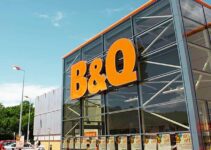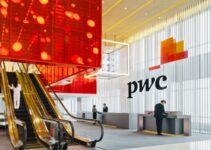Swot analysis of Heineken. Heineken N.V. is a Dutch beverage and beer brewing multinational company. Gerard Adriaan Heineken was the founder of Heineken, and he laid the foundation of the beer company on Feb 15, 1864. The headquarter of the company is in Amsterdam, Netherlands.
Heineken is the world’s second-largest brewing company. The beer brand is operating its business in over 195 countries across the world. It has employed over 85000 employees to manage its operations worldwide.
Heineken sells its products under various brand names. Some of them are;
- Birra Dreher,
- Athenian Brewery,
- Beamish and Crawford,
- Murphy’s Brewery,
- Skopje Brewery,
- Al Ahram Brewery,
- Almaza Brewery, and many others.
According to an estimate, the annual revenue of Heineken in 2021 was 25.958 billion dollars, and it has decreased by 15.27%. Out of which, the net income of the beer company was 3.933 billion dollars, and it has declined by 1787.67%.
Heineken’s top competitors are;
- Constellation Brands,
- Greene King,
- Societe Commerciale de Brasserie,
- Hopworks Urban Brewery,
- Diageo,
- Molson Coors.
Today, we’ll discuss the swot analysis of Heineken. It’s going to analyze the internal and external factors impacting the world’s second-largest beer-producing brand. Here’s the swot analysis of Heineken as follows;
Strengths of Heineken
Innovation
Heineken believes in innovation. The company justifies its premium prices by offering a quality product. However, the brand has recently launched two programs to keep up with innovation; The Brewhouse and iLABS. The purpose of both of these programs is to address industry challenges through an innovative approach.
Heineken is also using the latest advanced technology like data analytics, IoT, AI, and Big Data in order to know the customer’s trends and supply chain process.
Marketing Strategy
Heineken spends billions of dollars on the marketing and promotion of its products and brand. It helps the company to keep the customers informed about its products. Most importantly, it allows the brand to maintain its perception of being a premium brand.
Sponsorships
Heineken has sponsored some international events like UEFA Europa League, Rugby World Cup, UEFA Champions League, and Formula 1. Sponsoring those events helped the company to promote its brand and products.
Global Market
Heineken is a multinational brand and operates its business in over 195 countries. The global market has helped the company to grab more opportunities and reduce risk. It’s worth mentioning it here that Heineken sells its products under different brand names.
For instance, the company offers Strongbow, Desperados, and Birra Morti in Europe, Bintang, Tiger, Larue, and Anchor in the Asia Pacific, and Lagunitas, Schin, Dos Equis, and Tecate in America.
Product Portfolio
Heineken has a vast and well-diversified product portfolio and owns various brands, roundabout 300 brands. The company offers both alcoholic, non-alcoholic, and malt-based products. The goal is to target different types of audiences according to their needs and wishes.
Brand Name
Heineken has a well-known powerful brand name, and the company has maintained it for the past one and a half-century through consistency and quality. The brand knows what customers expect, and it offers them the same products. However, people recognize the red star logo of the company all over the world.
Weaknesses of Heineken
Volatile Exchange Rates
Heineken is a multinational brand and runs its business worldwide. It’s highly dependent on the currency exchange rates of different markets worldwide. The volatile nature of the currency exchange rate market impacts the profitability of the company.
Lower Market Share
Heineken has indeed covered the vast geographic market of 195 countries worldwide. But the company’s market share in some markets like China and North America is very low. While keeping in mind that both of these markets have high beer consumption and large consumer markets. The poor performance in Asia and North America is impacting the company’s growth rate.
Opportunities available to Heineken
Changing Customer Trends
The customers’ market trends keep on changing every 10 years when a new generation enters the market. It presents a great opportunity for Heineken to make some changes in the product and increase the demand.
Merger & Acquisition
Heineken was the world’s largest brewing company; it went to the 2nd position when InBev and SABMiller merged with each other. Therefore, the beer company should keep looking for opportunities in weak geographic areas. Just like the brand purchased Biela Ecuador in 2019 and Lagunitas in 2015. Both of these acquisitions have opened up new opportunities for the company in new markets.
Economic Progress
The population is growing across the world, and it means an increase in the consumer market in Asia and developing countries. Heineken has a great opportunity to tap in and increase the supply of its products. More consumption would increase the sale and revenue to the company.
Threats Heineken has to face
Bad Perception & Regulations
Alcoholic beverages usually have negative connotations associated with them. That’s why the governments and legal departments have jumped in and set up alcohol consumption limits. Even though Heineken products follow health and protocol, they have to market them. Most importantly, the brand should be aware of the legal status of different countries before launching or promoting its products.
Some people are suggesting that Heineken isn’t a suitable brand to sponsor sporting events. That’s why the company is promoting Heineken 0.0% with zero percent alcohol in it. It’s a smart move of the company. However, the brewing company should also keep in mind the transport, packaging, and label regulations of different markets.
Economic Crisis
The global economic crisis has significantly reduced the consumption and sale of Heineken products. That’s why the net income of the brewing brand dropped to a great extent. Businesses are opening, and consumption seems to be up again. But it would take a lot of time for the market to recover from the loss.
Healthy Trends
Healthy diet, non-alcoholic, AA (alcohol anonymous), and exercising trends are growing among the young generation. They’re now saying no to alcoholic beverages. Such trends are jeopardizing the growth of Heineken.
Competitors
CR Beer, Kronenbourg & Super Rock, Carlsberg, AB InBev, and SABMiller are some of the main competitors of Heineken. The merging of InBev and SABMiller defeated the market share of the company, and they became the world’s largest beer production company in 2016. The growth of competitors and their acquisition and merging are pushing down the brand.
Conclusion: Heineken Swot Analysis Example Company
After an in-depth study of the swot analysis of Heineken, we have realized that Heineken is indeed one of the world’s largest brewing companies. The competitive market, healthy trends, lower market share, and regulations are some of the challenges of the company. Heineken should utilize its resource and promote its healthy products to address the bad perception; while paying heed on the internal strengths weaknesses; external opportunities threats of beer brand swot analysis example company.

Ahsan Ali Shaw is an accomplished Business Writer, Analyst, and Public Speaker. Other than that, he’s a fun loving person.


